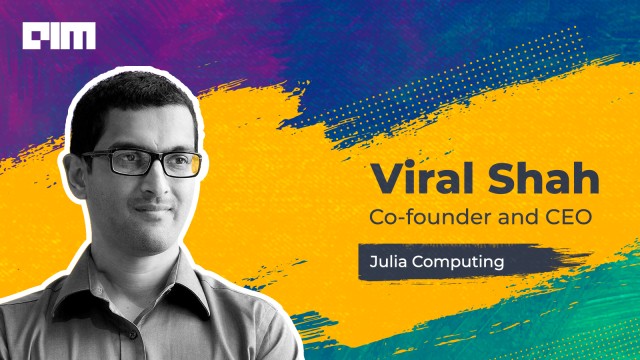Verizon is one of the top wireless carriers in the US, with over 120 million subscribers. The telecommunication giant’s India team plays a critical role in developing new technologies, building robust systems, and carrying out initiatives that cater to its vast consumer base. Verizon India is an innovation hub with teams working across different verticals.
Analytics India Magazine caught up with Prashant Gupta, Head of Solutions – South East Asia & India, Verizon Business Group, to understand more about the company.
Excerpts:
AIM: What are Verizon’s main offerings for the Indian market?
Prashant Gupta: Verizon holds National Long Distance (NLD), International Long Distance (ILD), Internet Service Provider (ISP), and Virtual Network Operator (VNO) licenses. We deliver a host of advanced IP, data, voice, and security solutions to meet the evolving demands of large businesses and government agencies. We are leading the industry with our Network-as-a-Service (NaaS), and Software-Defined Networking Virtualized Network Services (SDN VNS) as part of the proposition.
This month, we announced Advanced Secure Access Service Edge (SASE), an innovative solution that merges Software-Defined Wide Area Network (SD-WAN) capabilities with comprehensive network security services to create a unified, cloud-delivered service model that supports the secure access needs of today’s digital environment.
We also work closely with multinational global companies in various verticals such as IT, ITES, BFSI, manufacturing, pharmaceutical, and e-commerce.
AIM: How do you leverage AI and machine learning in your services?
Prashant Gupta: Our objective is to leverage AI and machine learning to find additional and faster ways to improve the performance of our network. We use it to predict when we might experience an increase in data traffic, identify potential problems in the network and fix them before they happen, among others. Where in the past, we would rely on customer feedback, we now use predictive analytics algorithms to monitor 3GB of data per second from millions of network interfaces. AI allows us to predict hundreds of customer-impacting events before they happen and take steps to prevent them from occurring. Our algorithms first establish a “normal” behaviour that we expect from our networks, and then it identifies “unnatural” data and attempts to recognise these events.
We also have an internal team that creates and improves machine learning systems for specific business problems by leveraging open source tools and our internal development processes. As often happens with Big Data projects, though, the insights prove helpful in ways other than those for which they were originally intended.
AIM: Verizon recently released its 2021 report on Data Breach Investigations. What are the key takeaways?
Prashant Gupta: This year, we analysed 79,635 incidents, of which 29,207 met our quality standards and 5,258 were confirmed data breaches, sampled from 88 countries around the world.
DBIR 2021 revealed that many of the breaches in APAC were caused by financially motivated attackers phishing employees for creds and then using those stolen creds to gain access to mail accounts and web application servers.
Phishing was present in 36% of breaches in our overall dataset, up from 25% last year. Furthermore, instances of misrepresentation are 15 times higher than previous year in integrity compromised due to the increase of business email compromises.
There has been a decline of user devices (desktops and laptops) being compromised, despite the remote working scenario. This is expected, considering that breaches are moving towards Social and Web application vectors, and those are becoming more server-based, such as gathering credentials and using them against cloud-based email systems.
AIM: How did the mobile security landscape evolve over time?
Prashant Gupta: We witnessed a global shift in the way organisations operate as an impact of Covid-19, many of which ramped up their digital transformation agendas to meet the evolving requirements of both employees and customers.
With the sudden increase in remote working and the spike in mobile device usage, the threat landscape changed, implying a greater need for organisations to hone in on mobile security to protect themselves and those they serve.
Companies have taken to remote work and cloud services big time to keep things functioning in a “socially distanced” environment. A broader profile of business responsibilities is now managed on mobile devices. Mobile security is tougher to manage than desktop and laptop security; phones and tablets are easier to lose and steal, and are at greater risk when it comes to certain types of cyber-attacks that rely on an end user’s failure to notice small details (such as phishing attempts).
Surprisingly, mobile security compromises were actually down as compared to any of the three previous years. However, the number is still high (23%), considering nearly a quarter of organisations can expect mobile device breaches.
What can be said for certain is that mobile risk is already high and still growing. We saw an order-of-magnitude increase in purchases of our mobile device management (MDM) solution.
Standing at number two, India is one of the largest telco markets globally, including the number of internet subscribers, making it one of the biggest consumers of data. In developing countries such as India, where people have access to international apps, the mobile threat scenario comes at par with the world’s.
AIM: As the world moves towards 5G technology, there is a fear among the general public regarding the possibility of severe health and environmental implications. What do you have to say about it?
Prashant Gupta: Many organisations such as World Health Organisation (WHO) and Public Health England (PHE) have internationally examined the implications of 5G, finding nothing that points to any negative impact on public health.
5G operates in non-ionising radiation, which means that it doesn’t have enough energy to cause any damage. Globally, the defence forces have been using this spectrum for many years now, and there has been no impact on health or the environment. Moreover, the industry body Cellular Operators Association of India (COAI) has confirmed that any concerns around the impact of 5G on health and the environment are not substantiated. The same was the outcome of recent court rulings on the petition filed.
AIM: 5G with AI is anticipated to bring in the next revolution in business. What are your thoughts on this?
Prashant Gupta: 5G and AI are two of the most revolutionary technologies of the digital era. Combining the two technologies can truly transform the way we experience networks. While 5G can help us collect information, AI can use that data and create business intelligence to increase revenues. 5G’s faster speeds, lower latency, and greater capacity will support a much larger number of wireless devices than ever before. In turn, this is expected to help bring about Industry 4.0 and the true Internet of Things era. While individually, 5G and AI are game-changing technologies; together, they can be game changers. With scalable bandwidth and remote computing power, 5G can facilitate better data collection, while the proliferation of AI should harness this information to generate business intelligence and increased revenues.
5G and AI will also be invaluable for enhancing customer experiences. With increasing number of internet users, the adoption of smart devices, and advances in technology across retail chains, both technologies can help retailers digitally connect the shop floor to collect data and improve the customer shopping experience with emerging technologies such as holograms and virtual reality.
Cybersecurity risks can also be mitigated through the combination of 5G and AI — a challenge that will inevitably grow in prevalence as things become more internet-connected. AI can autonomously detect threats and neutralise an attack instantly, helping manage the increasing threat from hackers that would be hard, if not impossible, to manage by human effort alone.
AIM: What are the challenges and the opportunities in India’s telecom sector?
Prashant Gupta: India’s telecom sector is full of potential, being one of the biggest and fastest-growing telecom markets. Mobile phones have reached villages, and with the Government of India’s efforts with the Digital India Program, people in rural areas now have access to high-speed internet. This development presents many opportunities for growth but, at the same time, puts mobile security at risk.
India also has a huge potential for manufacturing 5G enabled endpoints, with few companies already setting up their manufacturing facilities in India.
The advent of 5G wireless communications that India is preparing for constitutes a new era of network connectivity that will revolutionise many aspects of commerce and people’s lives. 5G, on paper, can reach up to 10-20 GBPS – some of the applications of 5G are autonomous vehicles, remote surgery, connected communities, automation, edge computing, etc. However, it is also important to note that with new technology comes the need for new security measures. Ensuring security of the 5G network will be of utmost importance.




















































































